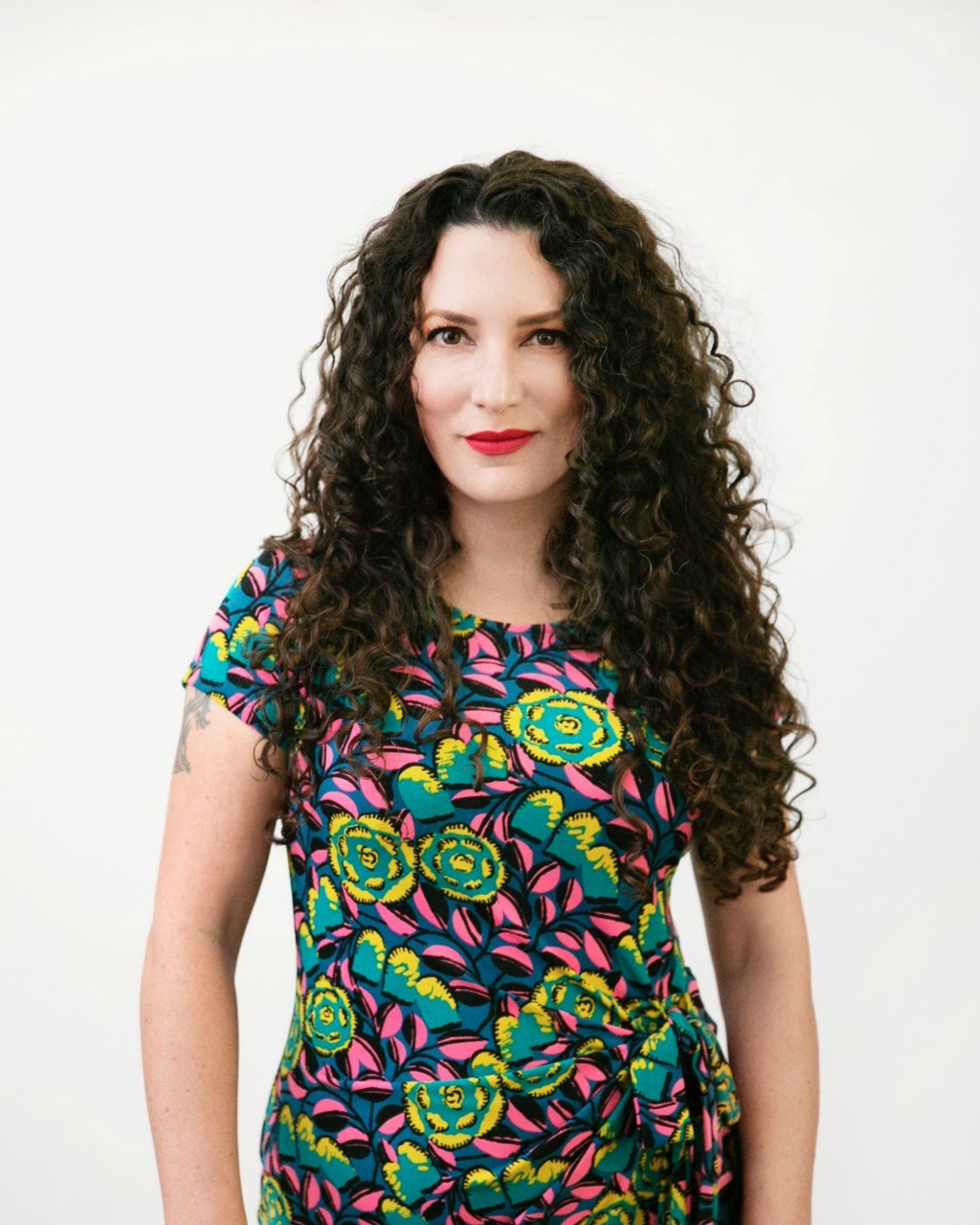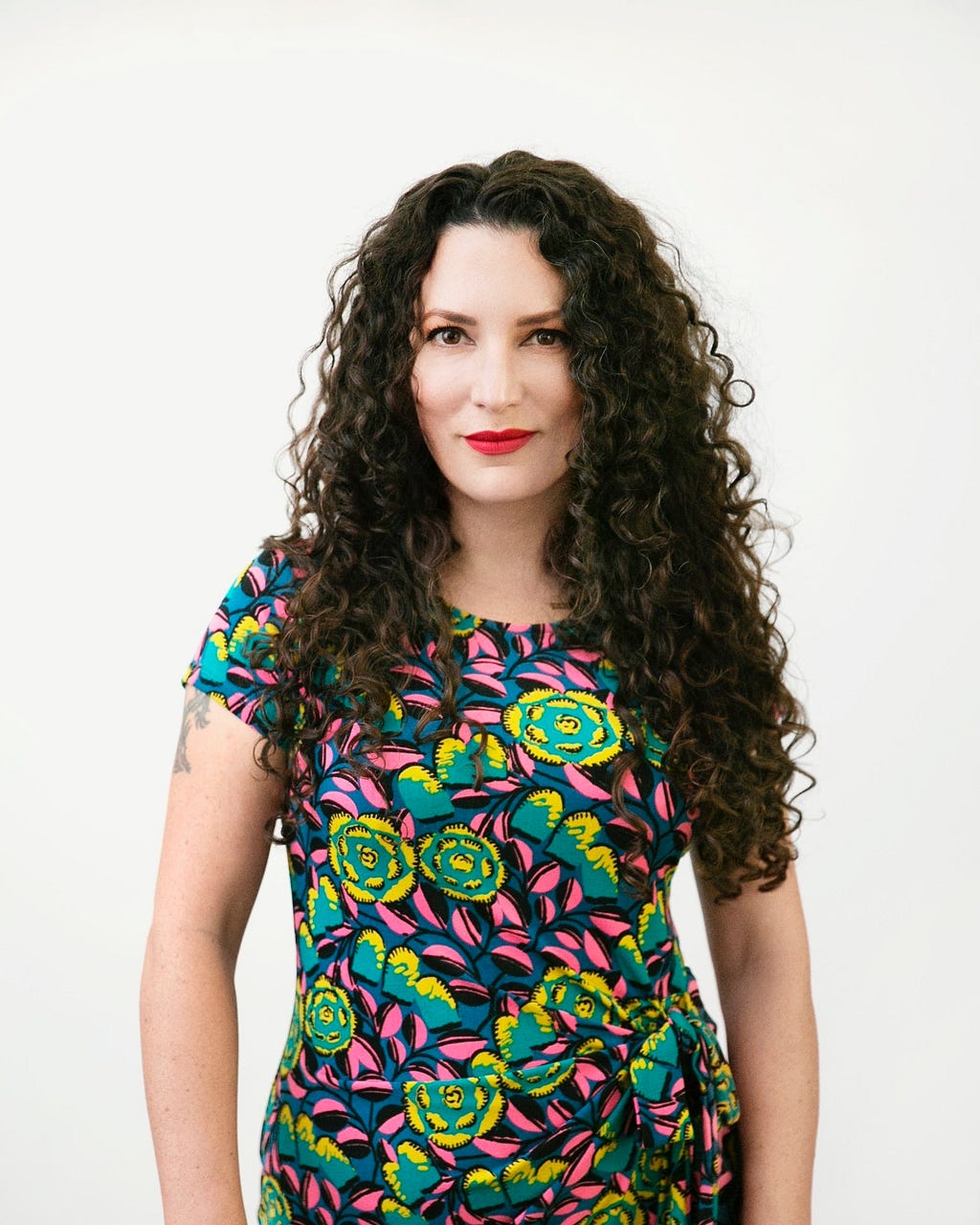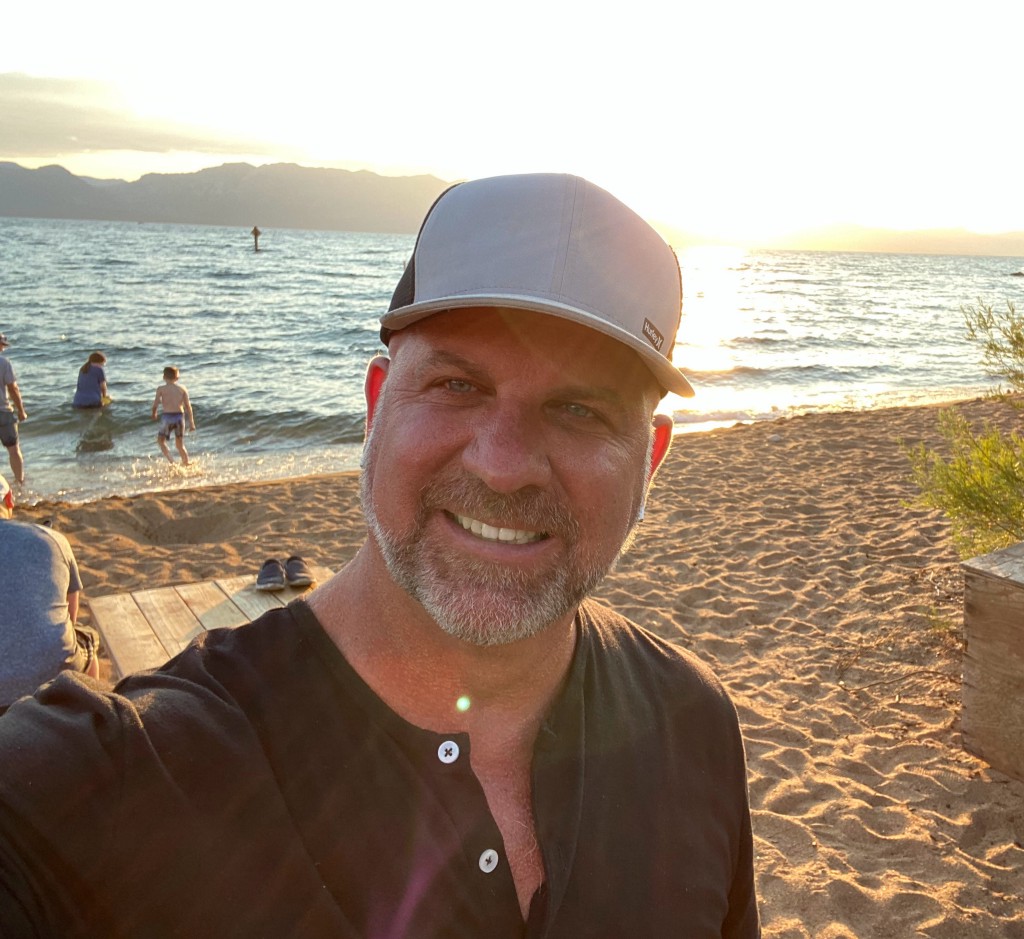Insiya Hussain of The University of Texas at Austin’s McCombs School of Business: 5 Things We Need To Do To Close The Gender Wage Gap
An Interview With Candice Georgiadis

To start, investing in women’s education is shown to reap huge social and economic rewards, particularly within the developing world. Women’s education is associated with lower rates of infant and maternal mortality, lower rates of disease and infection, and greater female labor force participation that spurs economic growth.
As part of my series about “the five things we need to do to close the gender wage gap” I had the pleasure of interviewing Insiya Hussain.
Insiya Hussain is an Assistant Professor of Management at The University of Texas at Austin’s McCombs School of Business. In her research, she examines the challenges of speaking up at work to share ideas and opinions, advocate for social issues, and negotiate for personal rewards. Hussain’s research has been published in top-tier academic journals such as Academy of Management Journal and Journal of Applied Psychology. Her work has also been featured in practitioner outlets such as Harvard Business Review. She is a member of the editorial review board at Academy of Management Journal and Organizational Behavior and Human Decision Processes. Prior to joining academia, Hussain worked at J.P. Morgan’s investment bank and as a project manager at technology companies. She earned her Bachelor’s degree in economics from Columbia University, and her doctorate in organizational behavior from the University of Maryland.
Thank you so much for joining us! Can you tell us the “backstory” that brought you to this career path?
My journey to becoming a business school professor didn’t follow a straight path. Although I was incredibly bookish and always did well academically, it never occurred to me that getting a doctorate was a viable option. It just seemed niche, obscure, and something that other people did — “geniuses,” if you will.
So when I graduated from Columbia, I did what was typical of most other economics majors at the time — try to get a job in either finance or consulting. I ended up working at J.P. Morgan, doing equity research. With a “good job” firmly in hand, I presumed that all I had to do over my hopefully illustrious career was steadily climb the corporate ladder, one rung at a time.
Except, of course, life doesn’t always work out that way. Within a year of my very first job out of college, the Great Recession happened, and I was laid off. It was a difficult time, but also, looking back, a blessing in disguise. I’m definitely grateful to have gotten the singularly unique experience of New York City investment banking. That said, the work had left me burnt out and with the quiet knowledge that it wasn’t quite the right fit. I just wanted more from work–more color, creativity, and autonomy. That’s why when I wasn’t burning the midnight oil, I was dreaming up new product ideas and charting a more entrepreneurial path.
After a brief period of adjustment, I followed my instinct to create by working as a project manager at digital agencies, building apps and websites for small-to-midsize companies. That’s really when I started to get more interested in work from an intellectual standpoint. In talking to friends and thinking about my own experiences, it struck me that no matter what we’re doing or where we’re doing it — whether we’re in finance or tech, or working with a startup or Fortune 500 — we all struggle with the same issues.
We sometimes find great meaning in work and other times feel that it’s all futile. We experience the joy of being in “flow” and other times struggle to stay motivated. We feel “stuck” in our careers, and also surprise ourselves by how far we’ve come. Of course, we almost always complain about our bosses and wonder who put them in charge. And all the while, we try to bring home a bigger paycheck, just to feel like we’re keeping our heads above the water.
It soon became clear that I was much more interested in the nature of work itself than in any particular job I was doing. I wanted to explore the many ideas and questions I had about how to make work better for everyone, but I didn’t know how. I thought about going back to school for a master’s or MBA, but neither path seemed quite right. In a flash of insight, I asked myself, “Wait a second, who teaches the MBAs?” And the rest, as they say, is history. The minute I started learning about getting a doctorate in organizational behavior, it all clicked. My penchant for reading, writing, and thinking; my interest in business and the workplace; my desire for creativity and autonomy, all seemed to come together for the first time in a single career path.
And so I went for it. I spent the next few years earning my Ph.D. from the University of Maryland, surrounded by some of the smartest and most inspiring people I’ve ever met. Today, I’m beyond lucky to be a professor at UT Austin’s McCombs School of Business. The work is challenging in the best of ways and is always evolving. I get to research the topics I’m interested in, work alongside fantastically bright and witty colleagues, many of whom are some of the biggest names in our field, and teach incredibly talented, hardworking students. As Steve Jobs said, “You can’t connect the dots looking forward, you can only connect them looking backward.” I’m glad that all the dots converged to bring me here, and I am excited for whatever is next.
Can you share a story about the funniest or most interesting mistake you made when you were first starting? What lesson did you learn ?
This is more of a funny story than a mistake per se. When you’re a professor, you come to realize that while you get older every year, your students stay exactly the same age. So you need to make sure your cultural references are up to date. I once cracked a joke based on the movie “Jerry McGuire,” proclaiming to my class , “Help me help you!” I got blank faces. When asking who had seen the movie, only two students raised their hands. Fortunately, my next wisecrack, “I’m officially old,” landed well! Relatedly, Gen Z wisely seems to be watching reruns of “The Office,” which provides perfect and timeless fodder for any organizational behavior class.
Jumping to the main focus of our interview, even in 2020, women in the United States still earn about 81 cents for every dollar a man makes. Why is that?
I think it’s important to first distinguish between the unadjusted and the adjusted gender wage gap — two key numbers that are often confused when people try to draw conclusions from stats about the gender pay gap.
The 81–83 cents number represents the unadjusted gender pay gap — that is, the overall gap that exists between all working women and working men, when we don’t control for relevant factors that could be contributing to pay differences. These factors might include differences between men and women in the number of hours worked, education levels, choice of occupation, and years of job experience.
The adjusted pay gap, meanwhile, does control for these variables, allowing for more of an apples-to-apples comparison. Specifically, the adjusted pay gap can help us understand the difference in earnings between a woman and a man working in roughly the same job, for the same number of hours, and having the same level of education. Fortunately, the adjusted pay gap is smaller, as it should be, though not ideal — around 95 cents to the dollar.
But the adjusted pay gap only helps us isolate the extent of discrimination along one narrow dimension — difference in pay for the same work. The gender pay gap — whether adjusted or unadjusted — can’t tell us about the other issues women face because of their gender, such as equality of opportunity. Women, for instance, might have to bargain a lot harder at home and work when wanting to invest in higher education or take on a demanding job. So even if women and men end up getting equal pay for equal work, they might face very different levels of challenge and struggle to get there.
Can you explain the main factors causing the gender pay gap?
First, women and men might be making different choices about their careers. Women, for instance, often prioritize jobs that offer fewer or more flexible hours, but that are also less well paid. This difference in hours worked is one piece likely contributing to the unadjusted pay gap. There are, of course, a lot of questions about the extent to which women’s choices are driven by nature versus nurture. Do women freely choose less well-paying and more flexible occupations out of personal preference, even when other, higher-paying but less flexible jobs are completely available to them? Or, do women make these choices out of social pressure, because they still take on primary caregiving responsibilities at home? There’s evidence for both possibilities. But suffice it to say, for a number of reasons, women and men often make different career choices that end up affecting their real and potential earnings.
Second, research suggests that women may not be choosing low-paying careers, but that careers become low paying as more women choose them: When women join an occupation in large numbers, wages in that occupation tend to stagnate and trend lower. The opposite is true when large numbers of men join a profession. Take nursing for example — a predominantly female profession. Wages in nursing tend to rise as more male nurses join the field. This is certainly depressing, and it points to society valuing women’s labor a lot less.
Third, and relatedly, you have good old-fashioned bias and discrimination. I know this can be a contentious issue, but there’s an abundance of field and experimental research demonstrating all the ways women are dealt a worse hand. Most notably, women face a “double bind.” When they engage in assertive behavior like trying to negotiate for a higher wage, they can be seen as less likable. If they don’t negotiate for higher pay, they obviously won’t get it. This creates a “damned if you do, damned if you don’t” situation.
All that said, it’s encouraging to note that every year the pay gap seems to be narrowing, albeit slowly. Andt in certain U.S. cities like New York City and Washington, D.C., women under 30 are actually out-earning men. This is likely because these cities have jobs requiring high levels of education and women now hold the majority of bachelor’s and advanced degrees. Altogether, it suggests that women’s investment in their education is paying off, and can help further narrow the wage gap.
Can you share with our readers what your work is doing to help close the gender wage gap?
I’m currently examining the role that men play in helping raise gender equity issues at work, like the gender pay gap.
There’s a real tension. On the one hand, we expect that when men speak up to advocate for gender equity, they’ll bring greater gravitas to the movement. This is because men, for better or worse, still have greater status and influence in organizations, and they’re also seen as less self-interested and therefore more credible advocates for gender equity.
On the other hand, many people think it’s not men’s “place” to speak up about an issue largely pertaining to women. The idea is, “This is about the challenges that women face, and about women’s advancement… what do men know? They should just shut up and let women do the talking.” It’s no wonder that men report walking on eggshells when it comes to talking about gender equity. They’re afraid of saying the wrong thing. The truth is, men’s fears aren’t unfounded. My research shows that compared to women, men are, in fact, seen as relatively less legitimate spokespersons for gender equity issues.
So what does this mean for men’s role in the movement? Do we expect men to be mostly silent supporters of whatever women say, or is it okay for men to share independent — perhaps even challenging or controversial — ideas about gender equity? Are people more likely to support the exact same idea about how to tackle a gender equity issue when it’s raised by a woman?
These are the types of questions I’ve been exploring in my research. What I’ve been finding is that people are more likely to support gender equity proposals when women and men come together in mixed-gender coalitions to advocate for them. This is because a mixed-gender coalition brings the “best of both worlds.” Men’s involvement as advocates signals that gender equity is an important issue, while women’s involvement signals the coalition has the legitimacy or “right” to speak up about the issue.
So it seems that one way to tackle identity-based issues like gender equity is to create a coalition of both beneficiaries (women) and non-beneficiaries (men). This suggests that although men’s support for gender equity is useful, it might be “wise” for them to let women lead the way.
I want to note that research on this topic is still developing, and the above preliminary conclusions are descriptive rather than prescriptive. Arguably, in a more perfect world, we would to a greater extent judge proposals for change based on their objective value and content, rather than on who is raising them (e.g., whether a constructive idea for change comes from a man or a woman).
Can you recommend five things that need to be done on a broader societal level to close the gender wage gap? Please share a story or example for each.
There are several things we can do as a society to create gender equity, which again, includes closing the gender wage gap.
To start, investing in women’s education is shown to reap huge social and economic rewards, particularly within the developing world. Women’s education is associated with lower rates of infant and maternal mortality, lower rates of disease and infection, and greater female labor force participation that spurs economic growth.
Second, we can create greater equity by increasing salary and negotiation transparency in the workplace. Research shows that when you reduce ambiguity about whether and what employees can negotiate at work, women no longer feel inhibited to ask, and the gender pay gap closes.
Third, we should implement opt-out (rather than opt-in) policies for promotion, so workers don’t need to ask for advancement. Women are unfortunately less likely to compete or self-promote under an “opt-in” promotion scheme, where you have to actively raise your hand to self-nominate. They hesitate. However, where the default is to be promoted, women are much more likely to remain in the promotion pool.
Fourth, mentor and sponsor junior female employees. It sounds so simple, but it works. People in higher-level roles who take young women under their wing play a huge positive role in their future success and career trajectories.
Lastly, there needs to be greater support for working parents. The U.S. is one of very few advanced countries worldwide that lacks paid parental leave at the federal level. The current Family and Medical Leave Act policy only guarantees eligible employees 12 weeks of unpaid leave, and even that is only within organizations with more than 50 employees. So although the FMLA is a start, it’s not living up to its full potential. Paid family leave can give women a strong financial rationale to return to work after childbirth rather than necessarily prioritizing their partners’ careers. Relatedly, organizations should take steps to encourage men, and not just women, to take paid parental leave. It takes a village to raise a child, and so long as men feel stigma in actively using their company’s childcare benefits, the whole family suffers.
You are a person of great influence. If you could inspire a movement that would bring the most amount of good to the most amount of people, what would that be? You never know what your idea can trigger.
Wow. There are so many important issues plaguing the world — war, poverty, infanticide, lack of sanitation, political polarization, and more. It can feel overwhelming. I also don’t have the data on which of these would lead to the greatest good for the most people.
What I can say — perhaps unsurprisingly — is that I care deeply about education as both a social and economic issue. Three points about this.
First, I’d love to see more free and high-quality education in the developing world. A good education is a force multiplier that benefits entire families and generations.
Second, at a national level, I’m concerned about the decline in reading for fun among children. This is not for purely sentimental reasons. Research shows that reading literature helps increase empathy — it quite literally makes you see the world through someone else’s eyes. Given the level of divisiveness and lack of nuance we see in the world today, something tells me that cultivating a love of reading among kids is one small step towards solving a lot of problems.
Finally, I’m a strong advocate for exposure to liberal education, rather than a purely vocational education. To be clear, I don’t mean politically liberal, or liberal with a capital “L.” What I mean by liberal is an education committed to deep inquiry, critical thinking, analyses of the big issues facing humanity, and reflection on challenging and opposing ideas. Schools shouldn’t just be trying to educate the next finance mogul or tech billionaire, but clear-thinking human beings all around, who are capable of contending with complexity in all its forms. This means engagement with philosophy, literature, and the social sciences as much as with business and STEM fields. They’re all important.
Can you please give us your favorite “life lesson quote”? Can you share how that was relevant to you in your life?
I especially love this quote attributed to the poet William Blake: “Without contraries is no progression.” I mentioned it in my undergraduate admissions essay just under 20 years ago, and I find that it still speaks volumes for me today, well into adulthood. We’re constantly coming up against contraries in life — such as by trying to reconcile good and evil in the world, and trying to navigate pain and joy in our work and relationships. I find that black-and-white answers are rarely satisfactory. Finding just the right shade of gray is the stuff of life.
We are very blessed that some of the biggest names in business, VC funding, sports, and entertainment read this column. Is there a person in the world, or in the U.S. whom you would love to have a private breakfast or lunch with, and why? He or she might see this, especially if we tag them.
I’d love to have a meal with Tim Ferriss. I’ve always been a fan of his books, and his podcast is fantastic.
Tim is sort of a rare specimen in the business world, with incredible range on a number of fronts. He combines this vibe of being the “most interesting man in the world” with an “everyman” relatability. For instance, he has just enough confidence to accomplish big things — write bestselling books, invest in blockbuster startups, and host one of the world’s most popular podcasts — but also shows just enough self-doubt to remain humble and continuously learning. His interviews go broad — featuring writers, artists, scientists, entrepreneurs, celebrities, political figures, and sports legends — but never sacrifice depth. His content can be incredibly serious, technical, and reflective, as well as goofy and just plain fun. There’s almost always an episode for the mood I’m in, and I learn something new every time. Tim can be easy to dismiss as the shtick-y “Four Hour [Something]” guy, but those who’ve been following his work for years know there’s much more on offer. I just enjoy hearing him think out loud on an eclectic bunch of topics, and so he’s the type of person I’d be interested to meet not because he’s famous, but in spite of his being famous.
I know Tim is extremely judicious when it comes to emails and meetings. Respect. That said, we’re both currently Austin-ites, so maybe we’ll bump into each other somewhere… Who knows! ☺
Thank you so much for joining us. This was very inspirational.
Insiya Hussain of The University of Texas at Austin’s McCombs School of Business: 5 Things We Need… was originally published in Authority Magazine on Medium, where people are continuing the conversation by highlighting and responding to this story.








